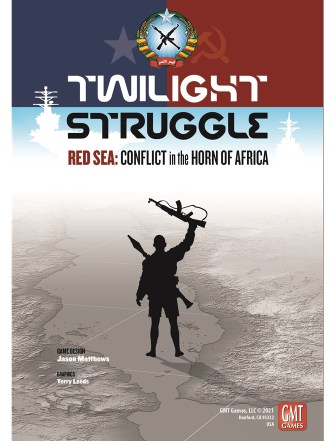Twilight Struggle has long been the game that I most wanted to find a satisfying way to play solo. The game rewards knowing your hand intimately, and guessing what’s in your opponent’s hand as well. Because the game is so tactical in determining the order and timing of card play, it is a difficult game to play solo. So when Jason Matthews asked me if I would help design the Solo Opponent for Twilight Struggle: Red Sea I jumped at the opportunity to solve these really hard problems.
Search Results for: "Inside GMT One"
Inside GMT One: CDG Solo System Print & Play Kit
by
GMT has long been a supporter of Stuka Joe’s CDG Solo system, which we highlighted in an insideGMT article way back in 2016. So, making an official GMT version that supports our CDGs and CDG players just made sense. When GMT One head Jason Carr reached out to Stuka Joe to see if he would like to see an official version made for GMT, it was immediately obvious that it was a great idea. While our main goal in developing this official set of rules and playsheets was to make the system more accessible and available to a wider audience, it we also wanted to give the system back to the community. So, we are proud and excited to reveal our Print and Play kit for the GMT CDG Solo System, but more on that in a minute.
Inside GMT One: Evolving Trưng into Tây Sơn
by
The development process for Fall of Saigon’s bots began way back with the development of the Trưng Bot Update Kit. Much of what Bruce Mansfield designed for Trưng eventually made its way into the Fall of Saigon bots, which we call Tây Sơn. The three Tây Sơn brothers united Vietnam in the 18th Century after a century-long civil war. While Tây Sơn owes a great deal to Trưng, there were distinct challenges involved in creating a bot for Fall of Saigon.The four main issues with designing Tây Sơn were: (a) new pieces, (b) the new 2-player scenario, (c) dealing with US Retreat vs War, and (d) ensuring the system works both with Trưng and with the original Fire in the Lake flowchart bots.
Inside GMT One: Behind the Design of Tru’ng
by
This month we wrapped up design work on the bots for Fall of Saigon, the upcoming expansion to Fire in the Lake. This seemed like a good moment to reflect on the journey that it took to get to this point and share some of the things we’ve learned along the way. This is definitely not the end of the road – more card-based COIN bots are coming – but it’s a good point for reflection.
The card-based bot system used in Tru’ng does not originate with Fire in the Lake, but is an offshoot of Bruce’s work on Gandhi (the card based system in All Bridges Burning is unrelated to Tru’ng and Arjuna, and was developed by VPJ Arponen specifically for ABB). When Volko asked Bruce to make card-based bots for Fall of Saigon, we knew that we would have to evolve the system to accommodate the increased complexity in Fire in the Lake. After all, we couldn’t make bots that could play Fall of Saigon unless they could also play Fire in the Lake.
Inside GMT One: Solo Play in Red Flag Over Paris
by
Fred Serval’s Red Flag Over Paris was definitely the surprise highlight of 2020 for me. As I sat in quarantine, much like all of you, I was buoyed by the simplicity and elegance of the game. Fortunately we live in a connected age, and I was able to enjoy many sessions of Red Flag with other players on Tabletop Simulator. With each play I kept wondering what it would take to add solitaire play to the game.
Inside GMT One: What’s Next for Fields of Fire?
by
Most tactical games start when your units make contact with the enemy, and bullets start flying. While tactical games will occasionally introduce hidden units, and operational games like Silver Bayonet require players to conduct recon to find the enemy, most wargames start when the action starts. Fields of Fire is different. Because you control an entire rifle company in Fields of Fire, your mission begins in the planning: What is the mission objective? How will we accomplish it? Who will maneuver? Who is in reserve? How will I coordinate with Battalion HQ?
This distinguishes Fields of Fire from every other wargame I’ve played. While the situation starts static in most tactical games, every mission of Fields of Fire will play out differently as the situation evolves and the enemy disposition is discovered. This narrative and the way that the game puts you in the position to attempt to solve the unknown is what drew me to Fields of Fire and is the main reason I wanted to work with Ben on Fields of Fire: The Bulge Campaign. Since the P500 announcement, I’ve been asked a lot what the next steps are for Fields of Fire generally.








